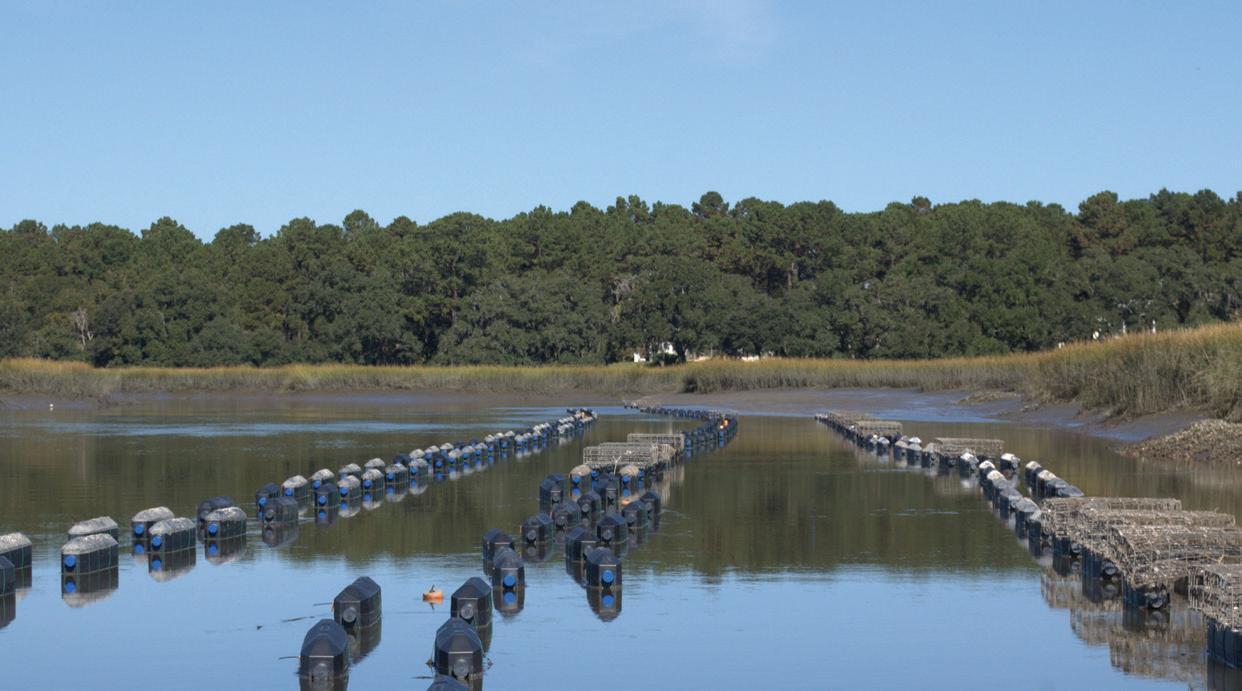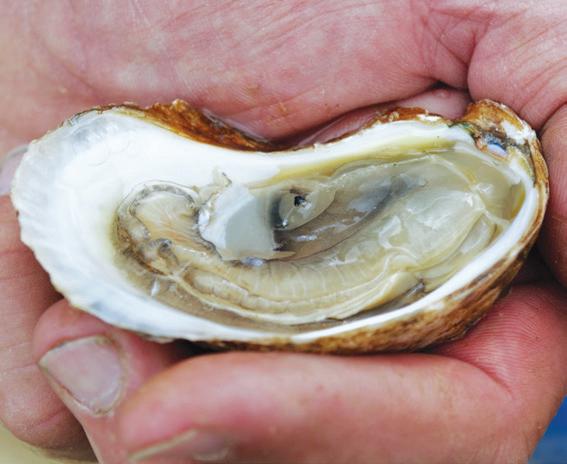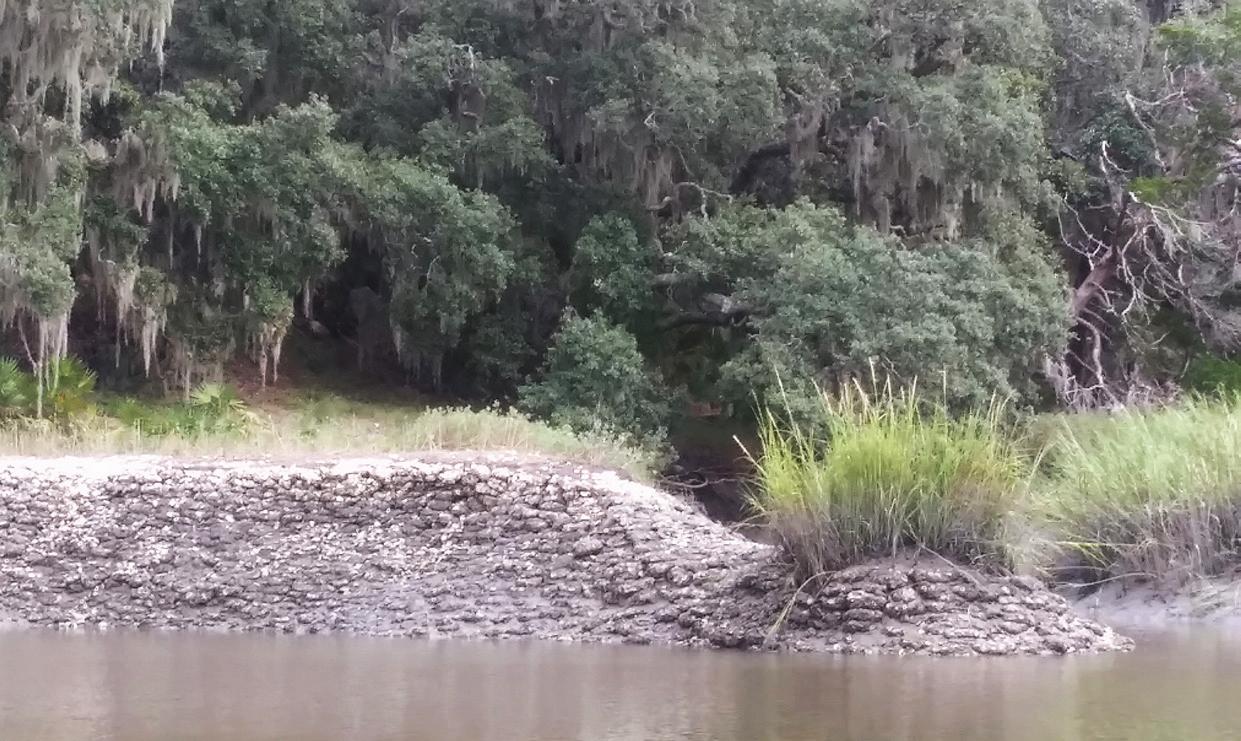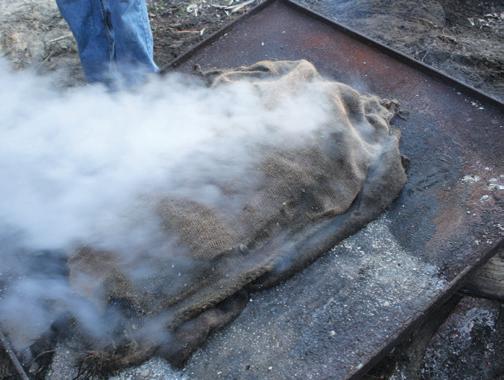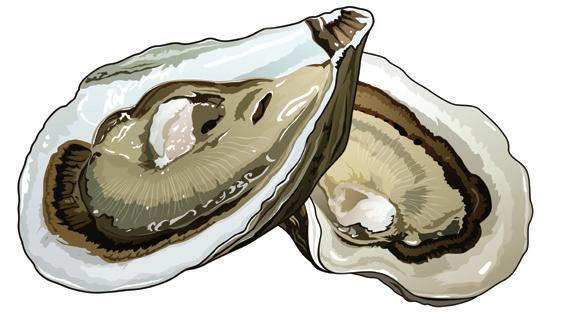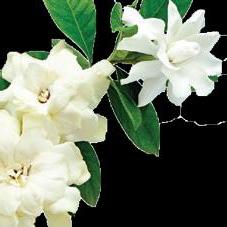Oyster shells Repurposed:
Living Shorelines
By Amy Thurman
Above: A section of creek bank with a newly installed living shoreline. Photo by Joshua Cryar Below: A before image of the same section. Image provided by Zulu Marine Services, Inc.
W
e’ve all seen oyster shells used for a variety of purposes from replacing gravel in driveways to artwork. But what if the shells from your next oyster roast could be repurposed for an even more beneficial use? Living shorelines, constructed as a natural slope, with materials such as bagged oyster shells, and planted with native plants, can reduce erosion of our creek and river banks and shorelines. This, in turn, also helps preserve our salt marshes and wetlands. Saltmarshes are among the most productive ecosystems on the planet, and Georgia’s make up about a third of those on the Atlantic coast. The need to preserve them isn’t new to any of us, but this method has only been around for just over a decade and has barely begun to be implemented. Although there are a scattering of living shorelines up and down the Atlantic coast, there are only eight, to date, in coastal Georgia. The most recent was established within the Cumberland Island National Seashore over this summer, by Zulu Marine Services (see ad, back cover), with a grant from the US Fish and Wildlife service. The process involves grading the eroded space to create a workable platform, installing a “toe” below the mean low waterline that serves as stabilization, then placing solid materials, such as bagged oyster shells, along the embankment from the low water line to above the tideline. Finally a layer of mud is placed and native species plants are planted, the roots of which provide additional stabilization as the plants mature. Within a matter of months, the fauna grows in and oyster beds begin establishing, in time creating a natural shoreline that resists
erosion by absorbing wave action, rather than washing away. In addition, these living shorelines mimic nature in allowing upland animals access to the water, provide additional natural habitat for marine life, the oyster beds allow for more water filtration, and they don’t create barriers that could choke wetlands and marshes, like bulkheads can. Also of note, the cost to construct a living shoreline is comparable or even less than constructing a bulkhead of the same 12
Southern Tides Magazine
October 2020

